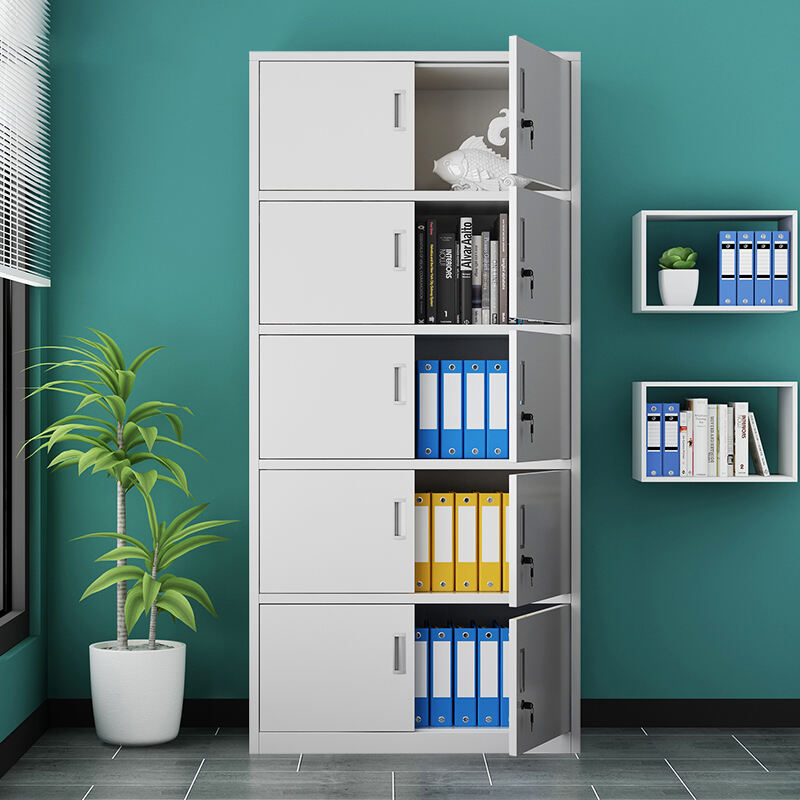Overview of Metal and Wooden Cabinets
Metal storage cabinets, typically made from high-grade steel, are known for their durability and security features. They are commonly used in offices for filing documents, storing supplies, or securing equipment. Wooden cabinets, often crafted from materials like oak, cherry, or engineered wood, offer a classic aesthetic and are favored for their warmth and versatility in design. Understanding the strengths and weaknesses of each material is essential for making an informed decision.
Did You Know? Metal cabinets gained popularity in offices during the 20th century due to their fire-resistant properties, while wooden cabinets have long been valued for their timeless appeal in professional settings.
Comparing Metal and Wooden Cabinets
Below, we evaluate metal and wooden cabinets based on key criteria relevant to office use:
1. Durability and Longevity
Metal Cabinets: Metal cabinets, particularly those made from steel, are highly durable and resistant to dents, scratches, and corrosion. They are designed to withstand heavy use in high-traffic office environments, making them ideal for long-term storage solutions. Many metal cabinets feature powder-coated finishes that enhance durability and prevent rust.
Wooden Cabinets: Wooden cabinets vary in durability depending on the material. Solid hardwoods like oak or maple are sturdy but can be susceptible to scratches, water damage, or warping if not properly maintained. Engineered wood or laminates may be less durable and prone to wear over time, especially in busy offices.
Verdict: Metal cabinets generally offer superior durability and longevity, especially in demanding office settings.
2. Security Features
Metal Cabinets: Metal cabinets often come with advanced locking mechanisms, such as key locks, combination locks, or centralized locking systems, making them ideal for storing sensitive documents or valuable equipment. Fire-resistant metal cabinets provide additional protection for critical files in case of emergencies.
Wooden Cabinets: Wooden cabinets may include locks, but their security features are typically less robust than those of metal cabinets. The softer material can be more vulnerable to forced entry, and fire resistance is rare unless specially treated.
Verdict: Metal cabinets provide better security, particularly for offices handling confidential or high-value items.
3. Aesthetic Appeal
Metal Cabinets: Metal cabinets offer a sleek, modern look that suits contemporary office designs. Available in various colors (e.g., black, white, or metallic finishes), they can blend seamlessly with minimalist or industrial aesthetics. However, they may lack the warmth of wooden cabinets.
Wooden Cabinets: Wooden cabinets bring a classic, elegant aesthetic to offices, with natural wood grains or polished finishes that add warmth and sophistication. They are ideal for traditional or upscale office environments but may not suit ultra-modern settings.
Verdict: Wooden cabinets excel in aesthetic warmth and traditional appeal, while metal cabinets are better for modern, streamlined offices.
4. Maintenance and Care
Metal Cabinets: Metal cabinets are low-maintenance, requiring only occasional cleaning with a damp cloth and mild detergent to maintain their powder-coated finish. They are resistant to stains and spills, making them easy to keep clean in busy offices.
Wooden Cabinets: Wooden cabinets require more maintenance to prevent scratches, water damage, or fading. Regular polishing and careful cleaning are necessary to preserve their appearance, especially for solid wood models. Engineered wood may be easier to maintain but can still chip or peel over time.
Verdict: Metal cabinets are easier to maintain, making them more practical for high-traffic offices.
5. Weight and Mobility
Metal Cabinets: Metal cabinets are generally heavier, which can make them stable but less portable. However, mobile metal pedestals with casters are available for flexible workspaces, offering both durability and mobility.
Wooden Cabinets: Wooden cabinets are often lighter, especially those made from engineered wood, making them easier to move. However, they may lack the stability of heavier metal cabinets, especially when fully loaded.
Verdict: Metal cabinets offer better stability, while wooden cabinets are easier to relocate unless mobility features are included.
6. Cost and Value
Metal Cabinets: Metal cabinets vary in price based on features like fire resistance or advanced locking systems. While high-end models can be costly, their durability and low maintenance offer excellent long-term value.
Wooden Cabinets: Wooden cabinets range from affordable engineered wood options to expensive solid hardwood models. While they may have a lower upfront cost, their maintenance needs and potential for damage can reduce long-term value.
Verdict: Metal cabinets typically provide better long-term value due to their durability and minimal upkeep.
Comparison Table: Metal vs. Wooden Cabinets
| Feature | Metal Cabinets | Wooden Cabinets |
|---|---|---|
| Durability | High; resistant to dents, scratches, corrosion | Moderate; susceptible to scratches, water damage |
| Security | Advanced locks, fire-resistant options | Basic locks, limited fire resistance |
| Aesthetics | Modern, sleek, suits contemporary offices | Warm, classic, suits traditional offices |
| Maintenance | Low; easy to clean, resistant to stains | High; requires polishing, careful cleaning |
| Weight | Heavier, stable; mobile options available | Lighter, easier to move; less stable |
| Cost | Moderate to high; excellent long-term value | Low to high; higher maintenance costs |
When to Choose Metal Cabinets
Metal storage cabinets are the better choice for offices that prioritize:
- Durability: Ideal for high-traffic environments or long-term use.
- Security: Perfect for storing sensitive documents or equipment.
- Low Maintenance: Suitable for offices with minimal time for upkeep.
- Modern Aesthetics: Complements contemporary or industrial office designs.
Examples include corporate offices, medical facilities, or legal practices where security and durability are critical.
When to Choose Wooden Cabinets
Wooden cabinets are preferable for offices that value:
- Aesthetic Warmth: Ideal for traditional or upscale office settings.
- Lighter Weight: Easier to move in smaller or frequently reconfigured spaces.
- Budget-Friendly Options: Engineered wood cabinets can be more affordable upfront.
Examples include small businesses, creative studios, or executive offices prioritizing style over heavy-duty functionality.
Tips for Choosing and Maintaining Your Office Cabinet
Regardless of material, consider these tips when selecting and maintaining your office cabinet:
- Assess Needs: Evaluate storage volume, security requirements, and available space.
- Measure Space: Ensure the cabinet fits your office layout without obstructing workflow.
- Check Features: Look for adjustable rails, locks, or mobility options based on your needs.
- Maintenance: For metal cabinets, clean with a damp cloth; for wooden cabinets, use polish and avoid moisture exposure.
- Safety: Secure tall cabinets with anti-tip kits to prevent accidents in busy offices.
Conclusion
Choosing between metal and wooden storage cabinets for office use depends on your specific needs. Metal cabinets excel in durability, security, and low maintenance, making them ideal for high-traffic or security-focused offices. Wooden cabinets offer aesthetic warmth and flexibility, suiting traditional or budget-conscious settings. By evaluating factors like durability, security, aesthetics, and cost, you can select the best cabinet for your office. For a wide selection of high-quality storage solutions, visit pulagefurniture.com to explore options that enhance your workspace’s organization and efficiency.

